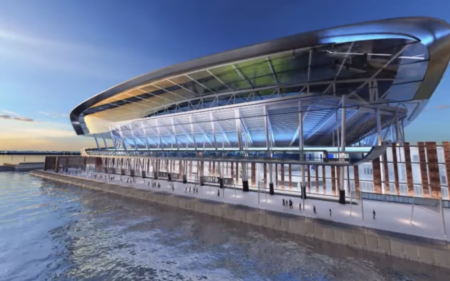Rugby fans are flocking to Japan from across the world to watch their countries battle it out in packed stadiums for the coveted World Cup. For host stadiums, this will be a major test of their networks as fans all attempt to connect to the Wi-Fi and track other matches in the tournament.
For teams working in operations and behind the scenes, from retail and food stores processing payments, CCTV systems and broadcast studios and commentary boxes, a well-connected stadium is also essential to the smooth running of the day.
While cheering on their home team will be front of mind, visitors expect to be able to connect to the Wi-Fi flawlessly to share moments with friends and family back at home. But rather than fear this influx of connectivity, stadiums should view it as an opportunity to engage consumers in new ways and maximize game-day to create an engaging fan experience. Organizers can revolutionize the way they interact and engage with crowds by making their visit more convenient and memorable. If they have the right network in place.
Rather than a cost, stadiums should consider their networks as an investment that could provide some significant commercial benefits in both the short and long term.
From sports stadiums to music arenas, public venues are looking to improve the customer experience through mobile engagement. It’s an approach that allows people to get more from their visit, and ultimately boost revenues. With a mobile device in almost every pocket, using an app to enhance experiences in stadium is an opportunity for venues to boost revenue, as well as the visitor experience. At Tottenham Hotspur’s new 62,000-seat stadium in London, which recently opened in April 2019, they created a new app which offers wayfinding to seats or friends in different sections of the stadium, information as to where the catering and toilets are located and even the latest news and stats for matchday. The network infrastructure even allows for up to 65% of the crowd to simultaneously stream live video, such as instant replays of goals or fouls, through mobile devices. When combined with cashless retail locations in a bid to speed up service, and intelligent LED signage which will direct fans to other bars and toilets, the stadium is creating an environment which is built to assist the customer and encourage them to stay longer at the venue.
The commercial opportunities are also huge for large venues when mobile technology is implemented. By collecting customers’ marketing data through the app, companies can personalize push notifications to each person in the stadium, based on their likes and interests. For instance, at last year’s Ryder Cup at Le Golf National course near Paris, organizers worked with commercial stakeholders and sponsors, such as BMW, using geo-fencing to send push notifications to consumers when they were near to the BMW stand on the course to come over and arrange a test drive or take photos with the vehicle.
These are just some of the opportunities that venues are testing, but there is still a long way to go. There’s an opportunity here for sport stadiums or venues to become way more technologically advanced than they are at present. For instance, you could order exclusive merchandise only available to app users watching that match or gig live, that day, or receive a special discount on food and merchandise from nearby kiosks.
In order to digitize the fan experience in large venues, the network infrastructure has to be resilient and consistent. But that is easier said than done. Designing and implementing a high-performance Wi-Fi network is always challenging, no matter if you are in a small office. Implementing a high-density Wi-Fi network in a stadium that facilitates tens of thousands of concurrent connections is another test altogether.
Getting the networking infrastructure right is crucial. Access Points (APs) will need to be placed around the stadium and provide exceptional performance wherever they are from robust, weatherproof pitch-side deployments to high-density environments like retail concessions. APs also need to be able to cope with a high number of concurrent users – the World Cup final stadium seats 72,000, as well as overcoming building materials that are often not conducive to good connectivity.
Ensuring ease of login for new and returning fans, as well as robust security, will be essential on a busy match day. IT teams need to manage real-time policies for how users and devices connect and what they can access is critical for family-friendly venue, and that’s not just for mobile phones – printers in ticket offices, security cameras and sensors force IT to think about securing an ever-increasing number of ports that are open to more and more security threats.
When a network is installed or upgraded, it is done when the stadium is empty so it makes performance testing a difficult task because Wi-Fi will perform differently when a stadium is full of people and a lot of network traffic. For open-air sports stadiums like they have for the Rugby World Cup, weather can become a factor to contend with as well.
In order to put stadium networks through the wringer before opening it to the public organizers should use stationary sensors. These sensors will test the Wi-Fi all day, every day, when the stadium is in use and not. This gives IT teams visibility to the true user’s perspective of how the network is performing. The sensors appear to the network and behave exactly as attendees would, allowing teams to see if the network is stable throughout the whole venue.
Customers’ technology expectations are growing exponentially and stadiums, much like retail stores and offices, need to innovate quickly to keep up. No longer can a stadium just be a location for a sporting or music event. It needs to be able to offer an experience that evolves a customer’s experience without being too intrusive or disruptive. Not only should fans be able to access Wi-Fi that is secure and consistently fast, but the stadium should offer smart and convenient digital interactions, in order to help boost stadium revenue and encourage consumers to spend more time at the location pre and post event.
This article was written by Simon Wilson, CTO HPE Aruba.





